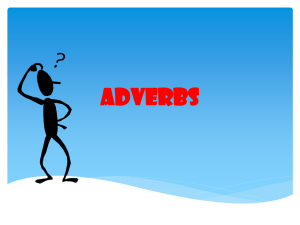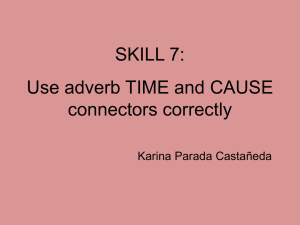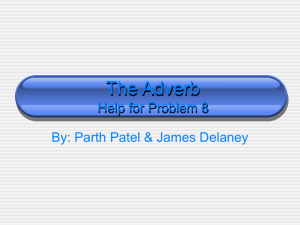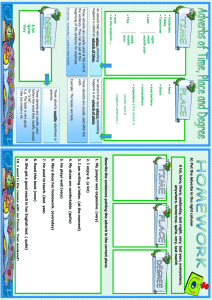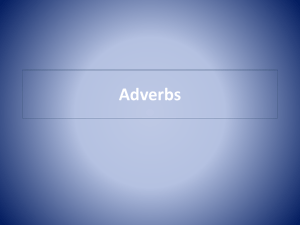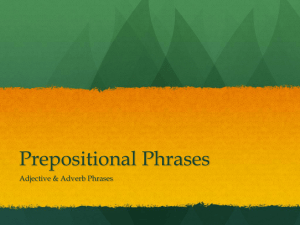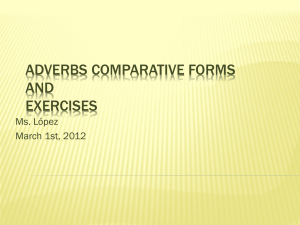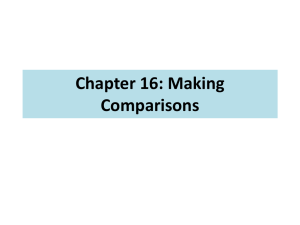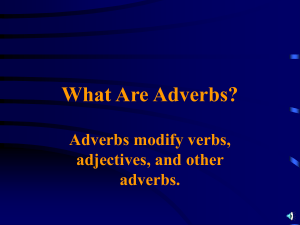Adverb Powerpoint (Lessons 1
advertisement
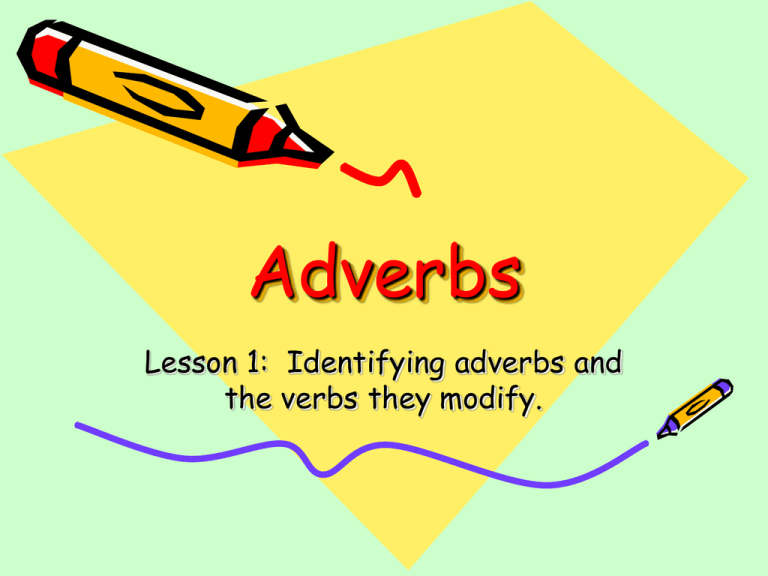
Adverbs Lesson 1: Identifying adverbs and the verbs they modify. Adverb Verb An adverb is a word that can modify a verb. Adverbs that modify verbs answer these questions: HOW? WHERE? WHEN? Here are some examples! • HOW? Alma left quickly. • WHERE? She arrived there. • WHEN? Then she arrived. Try It Out! 1. Yesterday we packed. 2. I enjoyed our trip immensely. 3. Mom drove carefully and well. 4. Dad always checked the maps. 5. Finally, we arrived safely. Adverbs Lesson 2: Identifying adverbs and the adverbs and adjectives they modify. Adverb Adjective or Adverb An adverb can also modify an adjective or another adverb. Adverbs that modify an adjective or another adverb, usually tell to what extent. Here is an example! A very large crowd gathered quite quickly after the accident. Try It Out: What word does each underlined adverb modify? 1. a terribly long way 2. completely safe elevator 3. reads quite carefully 4. very realistic dreams 5. burns less brightly 6. sings very beautifully 7. smiles so happily Adverbs Lesson 3: Comparing with adverbs Comparing two or more actions! To compare two actions: use the comparative form (-er) Dan arrived later than Sidney. To compare more than two actions: use the superlative form (-est) I arrived latest of all. Comparing two or more actions! If an adverb ends with –ly, add more or most to make comparisons. Jim answered more loudly than Sidney. Using less or least When you compare actions or qualities that are less rather than more, use less and least to make comparisons. Dan rows less often than Lisa does. Their coach complains least often of all. Some adverbs have irregular forms of comparison. ADVERB Comparative Superlative well better best badly worse worst little less least much more most Adverbs Lesson 4: Negatives Be Positive! A word that means “no” is called a negative. A negative can reverse the meaning of a sentence. Annie is on the team. Annie is not on the team. Common Negatives Some of the most common negatives are no, none, not, no one, never, nothing, hardly, nowhere, and nobody. The n’t in a contraction is also a negative. Doug never mows the yard. Carolyn couldn’t go with us. YIKES! Double Negatives! Two negatives used together are called a double negative. Incorrect: I can’t find nothing to wear. Correct: I can find nothing to wear. Correct: I can’t find anything to wear. Avoiding a double negative! (1) Drop the not (n’t). Correct: I can find nothing to wear. (2) Substitute a positive word for a negative word. Correct: I can’t find anything to wear. Most negative words have matching positive words! NEGATIVE nothing neither never nobody no none POSITIVE anything either ever anybody any some Adverbs Lesson 5: Adjectives or Adverbs? Adjective or Adverb? Remember: • Adjectives modify nouns and pronouns. We took a quick walk through the park. • Adverbs modify verbs, adjectives, and other adverbs and sometimes end in –ly. We walked quickly through the park. Good or Well? • Good is always an adjective. It is a good day to take pictures. Carly’s pictures are always good. • Well is usually an adverb. However, when well means “healthy”, it is an adjective. Adverb: I played baseball well. Adjective: I didn’t feel well when I awoke.

